There are, I think, few things in life quite as rewarding as turning your hobby into a paying job.
Too few are the opportunities we’re given to be truly passionate about our work. For experienced gamers in the 2020s, however, there has never been a better time to start making money whilst competing or streaming.
Sponsorship deals have turned some of the most popular esports stars and Twitch streamers into multi-millionaires, whilst thousands of casual streamers have been able to make a full-time occupation out of gaming by acquiring a portfolio of sponsors.
In order to get yourself a sponsorship deal, you might well need to know how to write a stand-out, unique and professional sponsorship proposal. In this article, we’ll walk you step-by-step through everything you need to know in order to write a killer proposal and bag yourself your first sponsor.

Types of Sponsorship Deals Available to Gamers
Before you begin writing your first sponsorship proposal, you need to make sure you are aware of the types of sponsorship deals available to you, as well as which you would like to pitch for.
Bear in mind, however, that not all sponsorship deals require you to go to the effort of drafting proposals. There are boutique, gamer-focused marketing companies out there – like Mindfuture – which do all the hard work for you, allowing you to sign up for brand campaigns in minutes, no matter how big or small your audience is.
With that in mind, let’s take a look at the various types of sponsorship deals you can ask a brand for in your sponsorship proposal.
Affiliate Marketing
Affiliate marketing is sort of a catch-all term for many different types of sponsorship deals you can engage a brand with. Ostensibly, however, it refers to a deal whereby you make a cut of the profits on every sale of a branded product you direct your audience toward. In an affiliate marketing deal, a company will typically give you ad copy to read, and/or free products to promote, and it’s your job to direct your audience from Twitch, YouTube or your socials, to go and buy certain products through affiliate links on your page or profile. Payment by affiliate marketing typically varies greatly depending on the traffic you push through to the purchase point, but may also work on a sliding percentage scale (of profit) to encourage higher sales.
Paid Promotion
Paid promotion refers to a more classic form of sponsorship, in which you are paid money (rather than with free services or products) to promote a company. This promotion could include a number of different marketing tools, such as hosting ads during your streaming session or esports competition, product placement (such as displaying a gaming keyboard prominently in-camera, or kitting out your esports team with branded t-shirts) or GamePlay (which we’ll discuss in more detail in a moment). Payment depends upon your audience size (CCVs – average concurrent viewers), the suitability of your audience demographic in accordance with the brand’s marketing objectives, and the time/degree to which you’re promoting the brand.
Free Products
Free product sponsorship is not going to (initially) make you any money, per say, but it’s a win-win for you and the brand the product(s) belong to. If you have an audience of reputable size, or who fits a brand’s marketing objectives, you can ask a brand to supply you with free kit on the grounds that you’ll showcase it, or perhaps even discuss it. Who doesn’t love free stuff?
GamePlay
GamePlay as a type of sponsorship deal refers specifically to being paid by a game production company to play their game whilst streaming to your audience. Game companies which want to catch the attention of new demographics, or more generally build buzz around their new game, are always looking for streamers to show the game off. This type of sponsorship deal is typically confined to the world of game streaming (on Twitch and YouTube, usually). Payment depends on your audience size (CCVs – average concurrent viewers) and the length of time you play the game.
How to Write a Killer Sponsorship Proposal: Guide for Gamers
In other industries, a sponsorship proposal often requires mountains of research and a massive document with a contents table, abstract, and detailed breakdown of finances. You’ll be glad to learn that, in gaming, we take things a little more casually…
Here are the key objectives of writing a sponsorship proposal in gaming:
- To grab the attention of a brand you’d like to sponsor you
- To show them why you’d be a good fit for their company
- To persuade them that you can add value to their brand
- To establish what type of sponsorship deal you’d like from them
- To begin building a professional relationship with the brand
- To open up a dialogue through which you can negotiate terms
In gaming, you don’t need to prepare a leather-bound business proposal to get yourself a sponsorship deal – a carefully researched and well-written cover letter will do – but you do have to be prepared.
Below, you’ll find thorough instructions for Five Steps to nailing that sponsorship proposal for gamers.
Step One: Draft Your Résumé/CV
It’s not always necessary to have a gaming résumé to hand when applying for sponsorships. With Mindfuture, for example, you just need to connect your gaming account (via Twitch, for example), and then choose yourself a sponsorship deal from their roster which you like the look of.
Even when applying independently to companies for sponsorship, a cover letter is often enough. However, I think it’s important to be prepared, and having a gamer’s CV ready shows potential sponsors that not only are you serious, you’re organised (a quality all companies love).
Pro Tip: If you’re looking for esports sponsorship, it is paramount you have a gaming résumé for yourself, or for every member on your team.
A gaming résumé should include the following:
- Your full name and gamertag
- Your streaming channel
- Full list of competitive wins, ranked most-least impressive (if relevant)
- Your most streamed games
- Audience demographics (age range, gender, location, etc.)
- Audience numbers
- Total views
- Total subscribers
- Average concurrent viewers (this is the single most important stat)
- Your typical stream time and schedule
- Your contact information
- Any other information you feel is pertinent to your status as a gamer or streamer
You can model your résumé on employment résumés, or get creative – creatively designed CVs tend to grab attention better than standardised ones.
Just make sure that you correctly format your gaming résumé with 1.5 or Double line-spacing, 12pt font-size, 1-inch margins, and a nice, professional, readable font like Arial or Times New Roman.
Step Two: Do Your Research
Brands and sponsorship contacts at companies receive dozens (maybe hundreds) of sponsorship proposals every single week. They can quickly tell when they receive a generic sponsorship proposal from someone who’s not done their research, or doesn’t know their brand.
It’s a really good idea to familiarise yourself with a brand before applying to them for sponsorship. After all, you need to know yourself why you want to partner with them. If the answer is “Just for the money”, you might need to think again.
Research the brand and your point of contact
Once you’ve settled on a company you want to sponsor you and your channel, find out as much about them as you can. Where are they based, what do they do, what is their target demographic, do they have clear marketing objectives which align with yours, what is their business ethic, and have they partnered with gamers before – these are all questions you should be asking yourself (and taking notes on).
With your research into the brand completed, you should have a clear idea of how you and they could successfully work together, how you can add value to them, and – don’t forget! – who will be your point of contact when sending the sponsorship proposal. You’ll usually be able to find the details of someone involved in Brand Management or Marketing on the ‘Contact’ page of their site.
Research other sponsorship deals
It’s equally important to know exactly what kind of sponsorship deal you want to ask the brand for.
We’ve already taken a look at what types of sponsorship deals you might be able to ask for (above), but it’s worth researching which one would suit you best, as well as which one would reflect the marketing objectives of the company best.
Have they got a new game to promote? A GamePlay sponsorship could be ideal. Do they want to break into a new demographic? Hosted ads (paid sponsorship) is your best bet.
It’s also worth researching whether your chosen brand is already engaged in other sponsorship deals with gamers. If they are, make sure you can provide them something new and niche; they probably don’t have the budget to sponsor two gamers of the same size and audience demographic. If they haven’t sponsored esports gamers or streamers before, think about how to sell them on the idea, whilst allaying any fears they may have.
Research your rate of pay
If your sponsorship proposal is successful (and if you follow this article to the letter, you’ve got more than a fair chance!), then the very next step is going to be negotiation on terms and rate of pay. I think it’s important to be prepared for this so that you’re not caught off guard when your brand contact gets back to you.
The amount (and way) you’ll be paid depends on a few things:
- Type of sponsorship deal (affiliate, ads, GamePlay, etc.)
- Your average number of concurrent viewers (CCVs)
- Relevancy of your audience demographic to brand marketing objectives
- Length of contract or time spent advertising the sponsor
Most of these factors can vary quite widely in application, but generally speaking, your average number of CCVs (concurrent viewers, or people watching your channel at any given moment) is the most important deciding factor in your rate of pay.
The higher your average CCV number, the higher the number of people a brand is going to be able to reach, and the more money they are going to be willing to pay.
At Mindfuture, the rate of pay is above average and easily-scalable. They pay between €1-1,50 EUR for every 1 CCV for every average hour. That means if you have an average number of 500 concurrent viewers, then taking part in a brand marketing campaign through Mindfuture would net you €500 plus.
Depending on the budget of the company you’re independently applying to, you may be able to negotiate a higher amount, or may have to settle for lower.
Step Three: Write Your Cover Letter
Okay, now finally to the most important part of writing a sponsorship proposal: writing the cover letter itself.
The cover letter is the first (and sometimes only) part of your sponsorship proposal a marketing executive will see. If they’re busy, or have a pile of proposals to get through, then they may make their mind up about yours in just a few seconds (brutal, we know, but reality nonetheless).
Thus, you need to make damn sure that the cover letter you write is as close to perfect as possible, right from the outset. Here’s what you need to keep in mind:
- Keep it short and to the point
- Be completely honest about your intentions and your following
- Make it crystal clear how you intend to add value to their brand
- Be professional, but make sure to still show-off your personality
And, most importantly of all:
- Write a new cover letter for every brand you apply to. Generic cover letters will never ever get you a sponsorship deal!
Now, let’s walk through the different sections to include in a successful sponsorship proposal cover letter.
Pro Tip: Try and keep each section to just one medium-sized paragraph; you want your finished cover letter to fit on one A4 page (one page of a word document).

Introduction and hook
The opening sentences to any cover letter are the most important sentences of all. They have to introduce you, your intentions, and grab the attention of the reader immediately.
Things you should include in your introduction include:
- Your name and gamertag
- Your channel and how many viewers (or what type of viewers) you stream to
- The purpose of your letter (to enquire about establishing a sponsorship arrangement)
A good example of a cover letter introduction might be:
My name is Paula Espinoza of ‘PaulaStreams’ on Twitch. I stream mostly Fortnite and League of Legends to around 1,000 average concurrent viewers every morning. I am writing to you today as a loyal customer and content creator, to inquire about the possibility of establishing an affiliate marketing arrangement with [BRAND NAME].
Describe your content and community
Next, having grabbed the reader’s attention, you need to succinctly describe for them the potential customers you’d be able to put them in touch with. This means giving them some information on the type of content you produce as a gamer (competitive or streamer), and who watches that content.
Having done your market research earlier, you should know what the target market of the brand you’re approaching is. You can work this in here, by showing why your particular audience would be interested in, and engage with, a sponsorship from the brand. Make sure to share up-to-date statistics (ideally in a screenshot) both of viewer numbers and audience demographic.
Try also to include a little of your own personality here. Specifically: how do you interact with your audience, and how do they interact with you? Do they ask what equipment you use (beneficial for affiliate marketing purposes), do they love your setup (great for product placement), do they come to you to find new games to play (ideal for GamePlay sponsorship).
Explain your interest in the company
You should only be applying for sponsorship to companies and brands which you actually like, respect and, ideally, use. Here’s the section of your cover letter in which you explain to the brand contact why you chose to apply to them and why you like their products or services, as well perhaps as how long you’ve been engaging with them. Remember, don’t lie! Go back and do your research if you find yourself making things up.
Detail how a partnership with you would work and how it would add value
This section is the second most important part of your sponsorship proposal.
Why should this brand want to work with you? Might seem like a harsh question, but it’s precisely this question you need to answer (and answer clearly) if you want a brand manager or marketing executive to take your proposal seriously.
You’ve got to show your reader how you intend to add genuine value to their brand. This should include an actionable game plan for doing so – for example, you’ll display a branded mouse and keyboard along with the company slogan in-video every time you stream; you’ll play the company’s game for one hour every night for two weeks; and so on.
The kinds of value you could add to a brand include:
- Expanding their customer base into new demographics
- Providing genuinely passionate and informed live customer reviews
- Unveiling new products and/or games to a dedicated following
- Displaying links to products in your profile (which has [X] followers)
- Writing a blurb on your website (with [X] hits) about the products and services
Give your contact details and thank the reader for their time
Finally, having hit every talking point concisely, succinctly, and in a professional yet characterful manner, it’s time to close out your cover letter. This part, thankfully, is super simple. Thank your reader for taking the time to consider your proposal, and provide them the contact details they’ll need to get back in touch. State that you’ve attached your CV (if applicable), and then sign off. C’est fin!
Step Four: Have Someone Proofread Your Proposal
Before you send your sponsorship proposal off to your contact at the company, I highly recommend that you get someone else (who’s not you!) to proofread your cover letter and CV. They’ll be able to see grammar and spelling issues which you didn’t pick up on. Correct the mistakes they point out to you, and move on to Step Five!
Step Five: Send the Proposal and Schedule Follow-Up
Lastly, it’s time to send off your sponsorship proposal! Send it from your gaming email account, making sure to spell the contact’s email address correctly (don’t CC anyone else in, keep it just between you and the contact). Use your cover letter as the body of the email, and attach your gaming résumé as a file attachment (if you plan to use it). Give it one last proofread, and then… hit send!
Don’t expect to hear back straight away. Chances are, you’ll be waiting for a few weeks to a month to receive a reply. However, it’s still a good idea to make a note in your diary to politely check back in with your contact after a month has passed (if they’ve not replied). In this follow-up email, be polite and don’t make any assumptions. Simply inquire as to whether they received your initial proposal and whether they’ve had time to review it yet.
Conclusion
Writing a sponsorship proposal as an esports gamer or gaming streamer can sound like a really daunting task, but we promise you it doesn’t have to be!
Once you’ve done some research and drafted out a plan of action, we promise you’ll get the hang of it in no time. Send a few out, wait to see what comes of them, and then send some more if you need to.
If, however, you just don’t know where to start, then why not try joining a professional esports marketing agency instead, and have them do all the paperwork for you.


